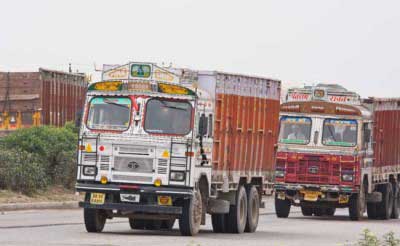
GST can transform India’s logistics, boost competitiveness: World Bank
The Dollar Business Bureau | @TheDollarBiz
 Roads account for around 60% of total freight traffic in India
Roads account for around 60% of total freight traffic in IndiaThe World Bank says that supply chain inefficiency is a major obstacle to manufacturing growth and competitiveness, and the goods and service tax (GST) offers a unique opportunity for the Indian government to reform logistics networks in the country. The GST was first proposed by the Indian government in 2006-07 and was planned for implementation by 2010, but consultations are still on in India. According to India’s Central Board of Excise and Customs (CBEC), GST will help combine the various taxes levied by the Central and State governments into a single tax and remove double taxation. This will make things cheaper and reduce the tax burden on customers, but there are wider implications. The World Bank says in its latest country report for India that currently logistics costs in India are about 2-3 times higher than international standards. Moreover, trucks in India are usually stuck at state border check-points (numbering around 650) for around 60% of the transit time due to the different sales and entry tax requirements of different states. This results in higher-than-optimal buffer stocks (of around 27%) and lost sales, says the Bank. At times, transporters opt for longer transit routes to avoid delays at state borders which increases logistics costs significantly. Moreover, costs escalate further in case of refrigerated trucks (reefer vehicles), which is one of the reasons for the shortage of reefer vehicles in India now standing at around 18,000 for milk and 7,000 for other perishable products. Overall, the World Bank estimates that Indian companies pay up to 10-14% of their net sales for logistics, compared to international standards of around 3-4%. Implementation of the GST and reducing checks at state borders can change all this. The World Bank says, “Regulatory impediments to the movement of goods across state borders raise truck transit times by as much as one quarter, and put Indian manufacturing firms at a significant disadvantage with international competitors.” It adds, “Implementation of GST will free up decisions on warehousing and distribution from tax considerations, and reduce supply chain delays.” According to the World Bank’s latest projections, India’s overall GDP is forecast to grow by around 5.6% in the current year and by around 7% by 2016-17, while exports are expected to grow by around 11.2% in 2015-16 and by 13.5% in 2016-17, sharply up from the projected growth rate of 7% for 2014-15. Some risks from domestic and external shocks could be offset by the implementation of the GST, says Denis Medvedev, Senior Country Economist, World Bank, India. He says, “The transformational impact of reform, particularly if enhanced by a systematic dismantling of inter-state check posts, can dramatically boost competitiveness and help offset both domestic and external risks to the outlook.”
This article was published on October 28, 2014.





 to success.
to success.